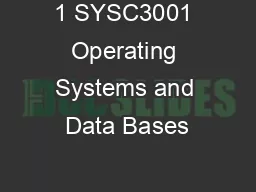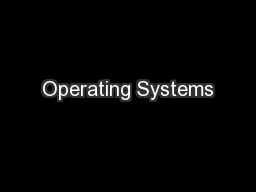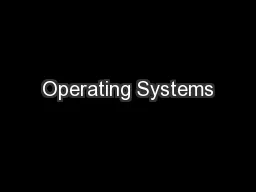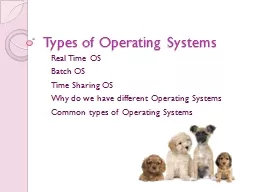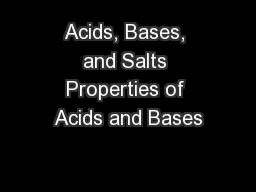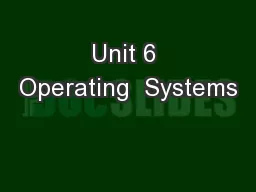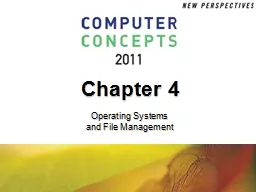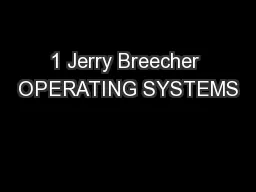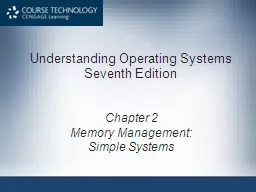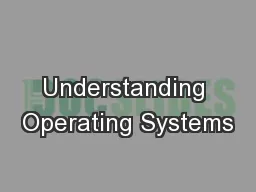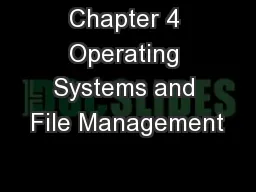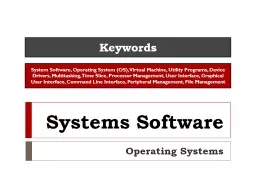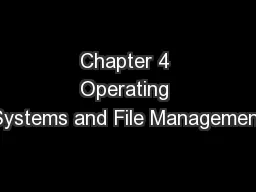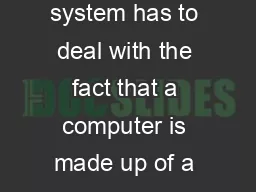PPT-1 SYSC3001 Operating Systems and Data Bases
Author : lindy-dunigan | Published Date : 2017-05-20
From calendar Management of CPU scheduling processes memory disk and files Implications of concurrency Concurrent programming including interprocess communications
Presentation Embed Code
Download Presentation
Download Presentation The PPT/PDF document "1 SYSC3001 Operating Systems and Data Ba..." is the property of its rightful owner. Permission is granted to download and print the materials on this website for personal, non-commercial use only, and to display it on your personal computer provided you do not modify the materials and that you retain all copyright notices contained in the materials. By downloading content from our website, you accept the terms of this agreement.
1 SYSC3001 Operating Systems and Data Bases: Transcript
Download Rules Of Document
"1 SYSC3001 Operating Systems and Data Bases"The content belongs to its owner. You may download and print it for personal use, without modification, and keep all copyright notices. By downloading, you agree to these terms.
Related Documents

